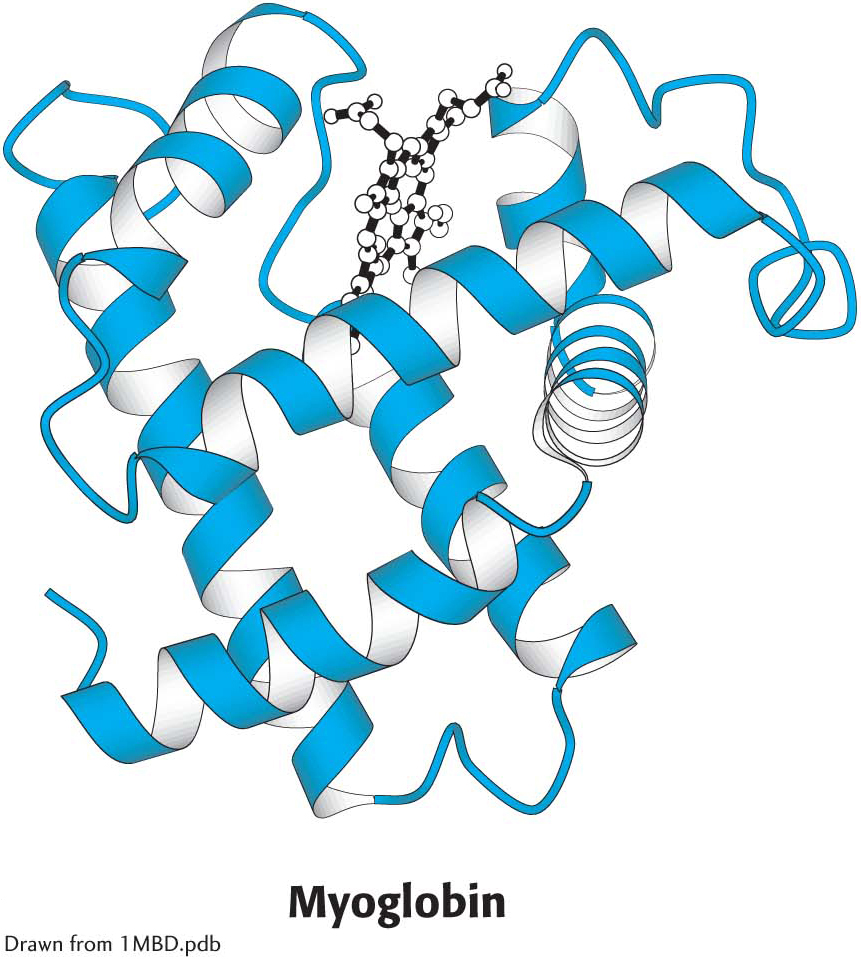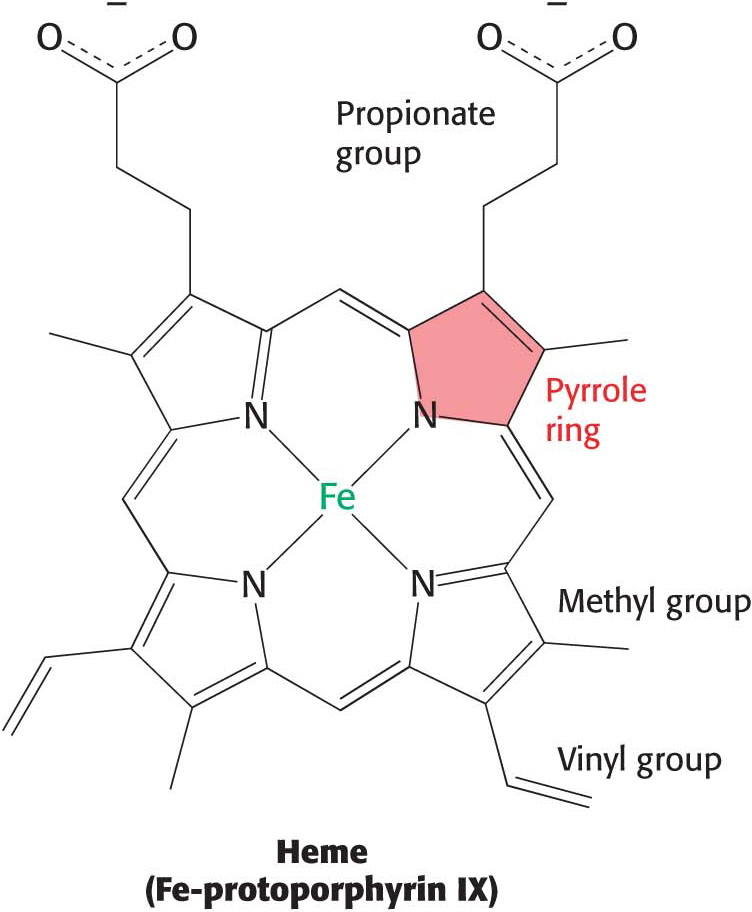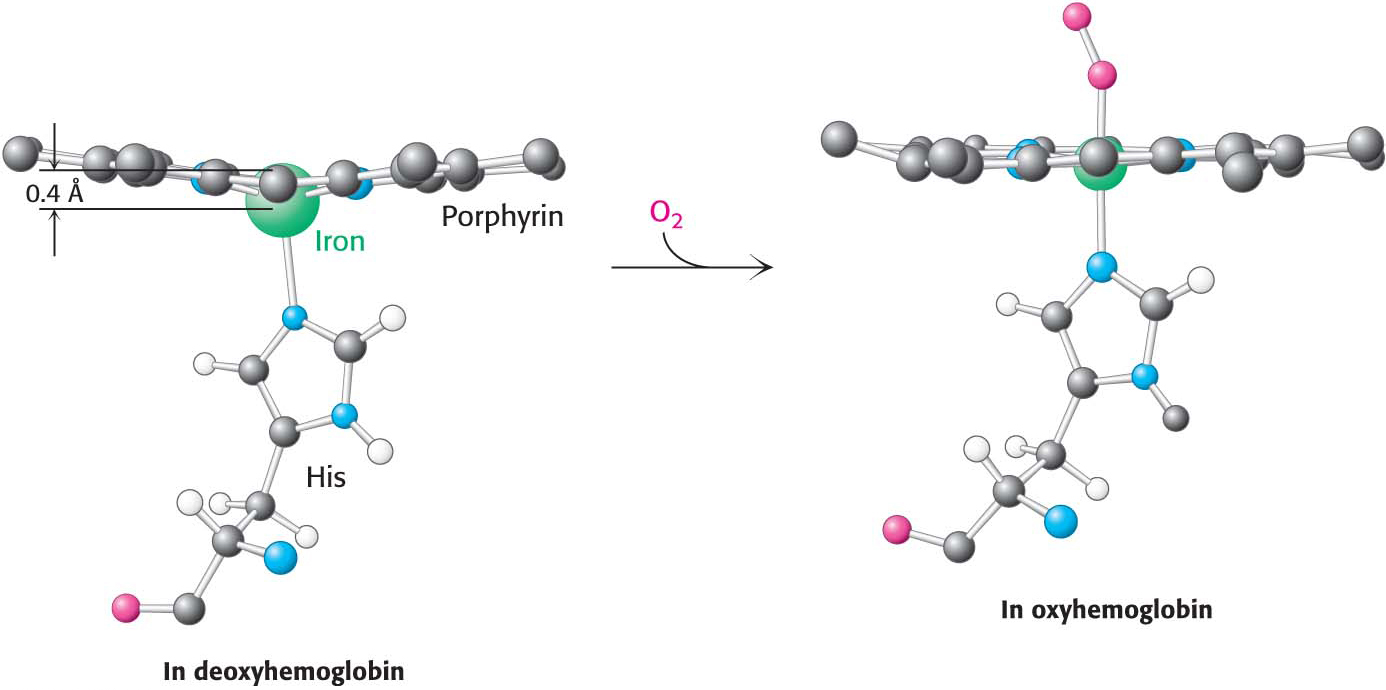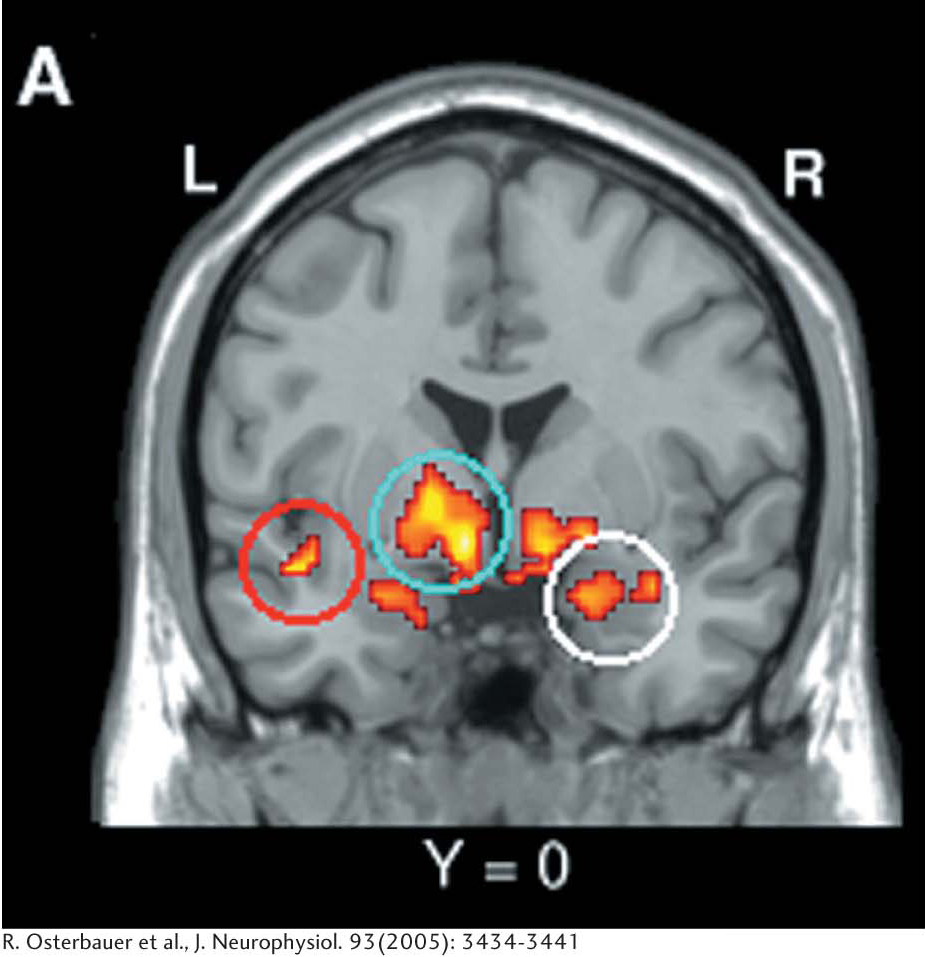
9.2 Myoglobin and Hemoglobin Bind Oxygen in Heme Groups

Myoglobin, a single polypeptide chain, consists largely of a helices that are linked to one another by turns in the polypeptide chain to form a globular structure (Figure 9.3). The recurring structure is called a globin fold and is also seen in hemoglobin.
Myoglobin can exist in either of two forms: as deoxymyoglobin, an oxygen-

The heme group gives muscle and blood their distinctive red color. It consists of an organic component and a central iron atom. The organic component, called protoporphyrin, is made up of four pyrrole rings linked by methine bridges to form a tetrapyrrole ring. Four methyl groups, two vinyl groups, and two propionate side chains are attached.
The iron atom lies in the center of the protoporphyrin, bonded to the four pyrrole nitrogen atoms. Under normal conditions, the iron is in the ferrous (Fe2+) oxidation state. The iron ion can form two additional bonds, one on each side of the heme plane. These binding sites are called the fifth and sixth coordination sites. In hemoglobin and myoglobin, the fifth coordination site is occupied by the imidazole ring of a histidine residue of the protein. This histidine residue is referred to as the proximal histidine. In deoxyhemoglobin and deoxymyoglobin, the sixth coordination site remains unoccupied; this position is available for binding oxygen. The iron ion lies approximately 0.4 Å outside the porphyrin plane because an iron ion, in this form, is slightly too large to fit into the well-

The binding of the oxygen molecule at the sixth coordination site of the iron ion substantially rearranges the electrons within the iron so that the ion becomes effectively smaller, allowing it to move into the plane of the porphyrin (Figure 9.4, right). The bound oxygen is stabilized by forming a hydrogen bond with the distal histidine.

 CLINICAL INSIGHT
CLINICAL INSIGHTFunctional Magnetic Resonance Imaging Reveals Regions of the Brain Processing Sensory Information
The change in electronic structure that takes place when the iron ion moves into the plane of the porphyrin is paralleled by changes in the magnetic properties of hemoglobin; these changes are the basis for functional magnetic resonance imaging (fMRI), one of the most powerful methods for examining brain function. Nuclear magnetic resonance techniques detect signals that originate primarily from the protons in water molecules but are altered by the magnetic properties of hemoglobin. With the use of appropriate techniques, images can be generated that reveal differences in the relative amounts of deoxy-
These noninvasive methods reveal areas of the brain that process sensory information. For example, subjects have been imaged while breathing air that either does or does not contain odorants. When odorants are present, the fMRI technique detects an increase in the level of hemoglobin oxygenation (and, hence, brain activity) in several regions of the brain (Figure 9.5). Such regions include those in the primary olfactory cortex as well as other regions in which secondary processing of olfactory signals presumably takes place. Further analysis reveals the time course of activation of particular regions and other features. Functional MRI shows tremendous potential for mapping regions and pathways engaged in processing sensory information obtained from all the senses. Thus, a seemingly incidental aspect of the biochemistry of hemoglobin has yielded the basis for observing the brain in action.
